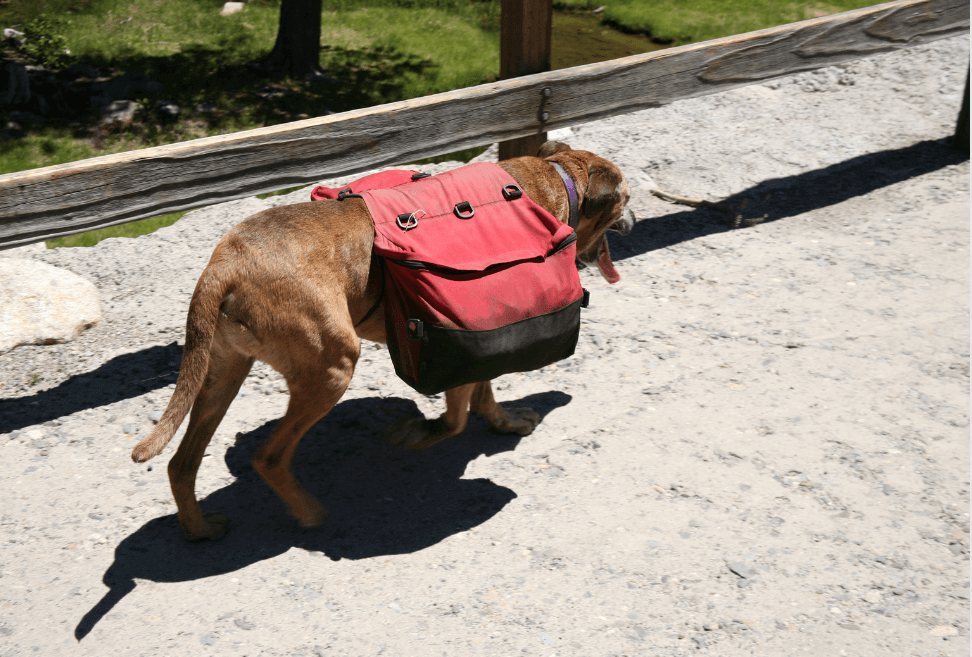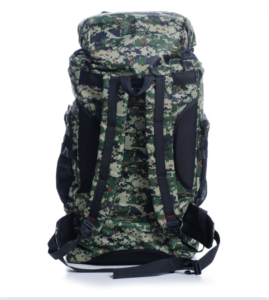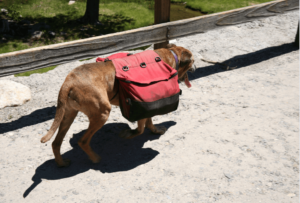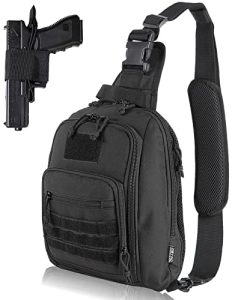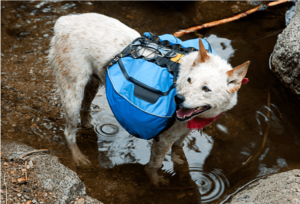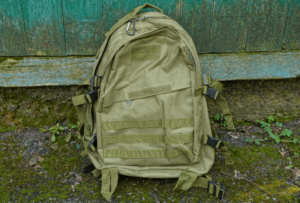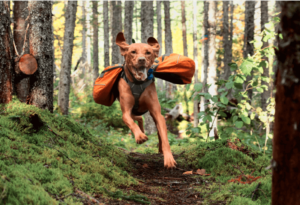Contents
Camping is a favorite pastime for many outdoor enthusiasts. It offers an escape from the hustle and bustle of everyday life and a chance to connect with nature. A dog backpack can be a game changer for those who love to camp with their four-legged friends.
With the right dog backpack, your canine companion can help carry some of the load, making the camping experience more enjoyable for both of you. However, choosing the perfect dog backpack for your camping trip requires careful consideration of various factors to ensure your dog’s safety, comfort and well-being.
We’ll outline the essential factors to consider when choosing a dog backpack for your next camping trip. From understanding your dog’s needs to considering terrain and weather conditions, we’ll guide you through the process of making an informed decision. At the end you will be well equipped to choose the perfect dog backpack for your furry friend.
Why Use a Dog Backpack?
Before diving into the specifics of choosing a dog backpack, let’s first discuss why you might want to use one. A dog backpack allows your pet to carry some of their essentials, such as food, water, toys, and other gear. This not only lightens your load but also provides your dog with a sense of purpose. Dogs are natural workers, and carrying a backpack can give them a job to do, which can enhance their overall camping experience.
Additionally, using a dog backpack can help improve your dog’s physical fitness. The added weight provides resistance, which can help build muscle and increase stamina. However, it’s important to ensure that the backpack is properly fitted and that your dog is not carrying too much weight.

Key Factors to Consider When Choosing a Dog Backpack
Size and Fit
One of the most critical factors when choosing a dog backpack is ensuring that it fits your dog properly. A poorly fitted backpack can cause discomfort, restrict movement, and even lead to injury. Here are some key considerations for sizing and fit:
- Measure Your Dog: Before purchasing a backpack, measure your dog’s chest girth, neck, and length. Most dog backpack manufacturers provide sizing charts based on these measurements.
- Adjustability: Look for a backpack with adjustable straps to ensure a snug and secure fit. The backpack should sit comfortably on your dog’s back without shifting or rubbing.
- Padding: A good backpack will have padding in key areas, such as the straps and underbelly, to prevent chafing and discomfort.
Weight Capacity
The amount of weight your dog can carry depends on their size, breed, age, and fitness level. As a general rule of thumb, a dog should not carry more than 10-15% of their body weight. For example, if your dog weighs 50 pounds, they should carry no more than 5-7.5 pounds in their backpack.
- Start Light: If your dog is new to carrying a backpack, start with a light load and gradually increase the weight over time as they become accustomed to it.
- Distribute Weight Evenly: Ensure that the weight is evenly distributed on both sides of the backpack to prevent imbalance and strain.
Material and Durability
The material of the dog backpack is another crucial factor to consider, especially for camping trips where your dog may encounter rough terrain and various weather conditions. Look for backpacks made from durable, water-resistant materials that can withstand wear and tear.
- Nylon and Polyester: These materials are popular choices for dog backpacks due to their durability and water resistance.
- Reinforced Seams: Ensure that the backpack has reinforced seams, especially in high-stress areas, to prevent tearing.
- Weather Resistance: If you’re camping in a rainy or snowy area, consider a backpack with water-resistant zippers and fabric to keep your dog’s gear dry.
Storage Capacity and Compartments
Consider how much storage space you’ll need for your dog’s gear. The backpack should have enough room for essentials such as food, water, a first aid kit, and waste bags.
- Multiple Compartments: Look for a backpack with multiple compartments to help organize your dog’s gear. This can make it easier to access items quickly and prevent everything from getting jumbled together.
- Quick-Access Pockets: Some backpacks come with quick-access pockets on the sides, which can be convenient for storing items you’ll need frequently, such as treats or a leash.
Comfort and Breathability
Your dog’s comfort is paramount when choosing a backpack. If the backpack is uncomfortable, your dog may resist wearing it or become fatigued more quickly.
- Breathable Fabric: Choose a backpack with breathable mesh panels to help regulate your dog’s body temperature, especially if you’re camping in warm weather.
- Ergonomic Design: Look for a backpack with an ergonomic design that distributes the weight evenly across your dog’s back and shoulders. This can help reduce strain and discomfort during long hikes.
Ease of Us
You’ll want a backpack that is easy to put on and take off, especially if you need to make adjustments during your camping trip.
- Quick-Release Buckles: Look for backpacks with quick-release buckles that allow you to easily remove the backpack if needed.
- Zippers and Closures: Ensure that the zippers and closures are easy to operate, even with gloves on, in case you’re camping in cold weather.
Reflective Elements
Safety is a top priority when camping, especially if you’re hiking in low-light conditions or near roads. A backpack with reflective elements can help make your dog more visible to others.
- Reflective Strips: Look for backpacks with reflective strips or patches to enhance visibility.
- Bright Colors: Opt for a backpack in a bright color, such as orange or yellow, to make your dog more noticeable in natural settings.
Hydration Compatibility
If you’re planning a long hike or camping trip, ensuring your dog stays hydrated is essential. Some dog backpacks come with hydration compatibility, allowing you to add a water bladder for your dog to carry.
- Hydration Bladder Sleeve: Look for a backpack with a sleeve or compartment specifically designed for a hydration bladder.
- Easy Access to Water: Ensure that the hydration system allows for easy access to water without having to remove the backpack.
Training Your Dog to Use a Backpack
Once you’ve chosen the perfect dog backpack, it’s essential to train your dog to wear it comfortably. Here’s a step-by-step guide to introducing your dog to their new backpack:
Start Slow: Begin by letting your dog wear the empty backpack around the house or on short walks. This allows them to get used to the feeling of wearing the backpack without the added weight.
Positive Reinforcement: Use treats and praise to reward your dog for wearing the backpack. This will help create a positive association with the backpack.
Gradually Add Weight: Once your dog is comfortable wearing the empty backpack, gradually add weight by placing small items in the compartments. Start with a light load and increase the weight slowly over time.
Monitor for Discomfort: Keep an eye on your dog while they’re wearing the backpack. If you notice any signs of discomfort, such as excessive panting, limping, or reluctance to move, remove the backpack and make adjustments as needed.
Practice on Different Terrain: Before heading out on a camping trip, practice wearing the backpack on various terrains, such as trails, hills, and uneven ground. This will help your dog build confidence and prepare for the conditions they’ll encounter on your camping trip.
Packing the Backpack: What Should Your Dog Carry?
When packing your dog’s backpack for a camping trip, it’s important to balance the load and ensure that your dog is only carrying essential items. Here’s a list of items your dog can safely carry:
- Food and Water: Your dog can carry their own food and water supply for the trip. Be sure to pack enough for the duration of your camping adventure, along with collapsible bowls for easy feeding and hydration.
- Waste Bags: Pack waste bags to clean up after your dog during your camping trip. It’s essential to leave no trace and keep the environment clean.
- First Aid Kit: A small first aid kit for your dog can be packed in the backpack. Include items such as bandages, antiseptic wipes, and tweezers for removing ticks or splinters.
- Leash and Collar: Your dog can carry an extra leash and collar in case of emergencies or if the primary set gets damaged.
- Toys and Treats: Bring along a few of your dog’s favorite toys and treats to keep them entertained and rewarded during the trip.
Making the Right Choice
Choosing the perfect dog backpack for your next camping trip involves careful consideration of your dog’s size, strength, and comfort, as well as the specific needs of your camping adventure. By taking the time to find the right fit, material, and design, you can ensure that your dog enjoys the experience as much as you do.
Remember to start with light loads and gradually increase the weight as your dog becomes more comfortable wearing the backpack. Always prioritize your dog’s safety and well-being, and make adjustments as needed during your trip.

